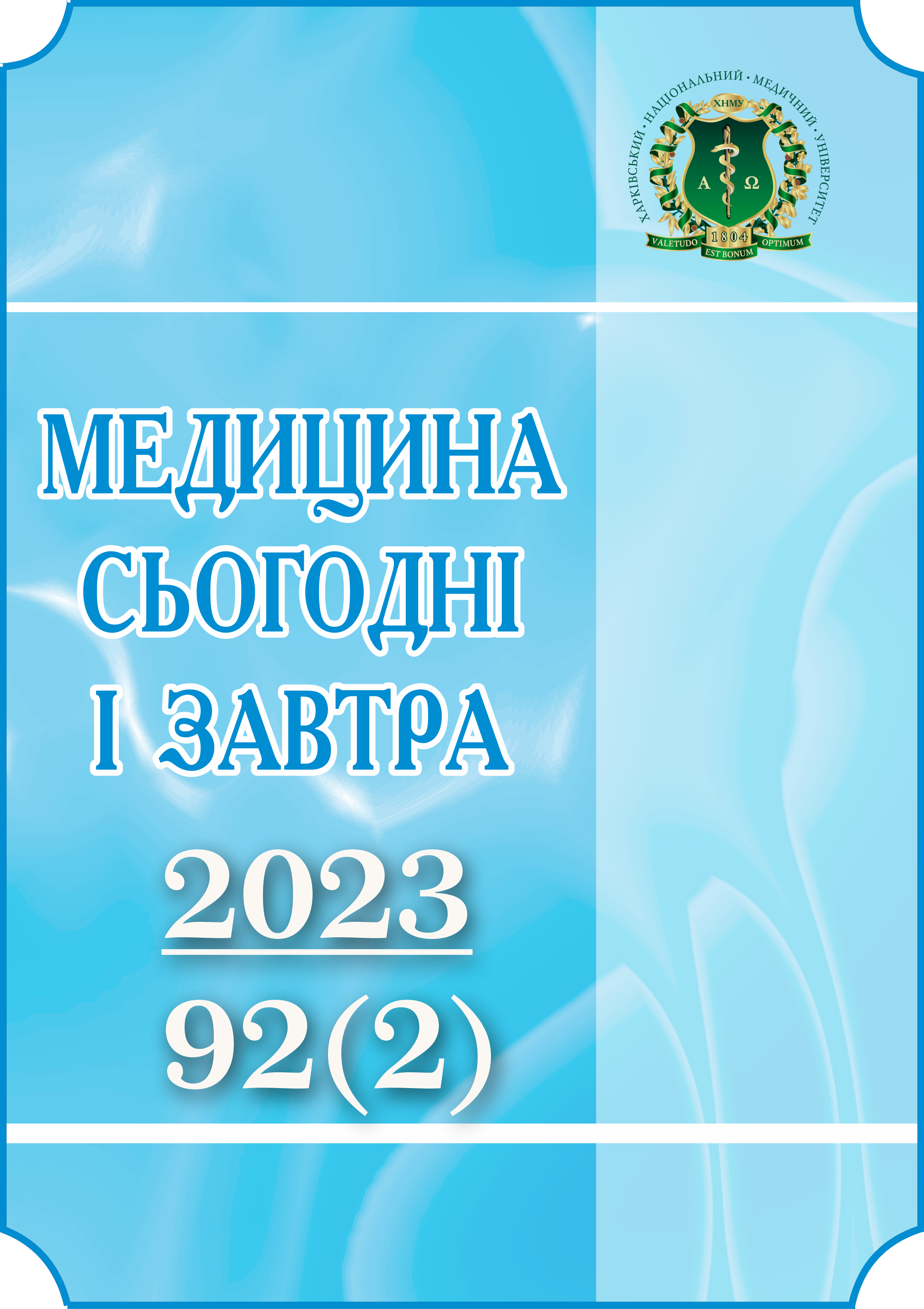Abstract
The purpose of the study is to assess the possibility of applying the calliperometric method to assess the physical development of children of primary school age who have chronic diseases in the stage of compensation. The research was carried out during 2017–2022 on the basis of the clinical units of the ONMedU. 120 children of primary school age were examined, including 30 – practically healthy (control group), 30 – from the group of frequently and long-term patients (Group I), 30 – from the number of children with congenital heart defects without signs of heart failure (Group II), and 30 – with signs of alimentary and constitutional obesity (III group). The physical development of children of primary school age was evaluated based on the results of anthroposcopic, anthropometric and physiometric indicators according to national standards of physical development. The assessment of body composition components (fat and lean body mass) was carried out according to Saunders R. in the modification of Velichko V.I., etc. The research was carried out in compliance with modern bioethical requirements, the children's parents signed a voluntary consent for the children's participation in the research. Statistical processing was carried out by methods of variance analysis using MS Excel software. It has been shown that obese primary school-age children have a body fat mass of (18.8±0.8)% for boys and (19.7±0.9)% for girls. In children of primary school age with normal body weight, in the presence of chronic diseases, body fat decreases by (10–15)%. Caliperometric method can be used to assess the physical development of children of primary school age who have chronic diseases in the stage of compensation.
Keywords: prevention, primary school age, body weight, assessment of fat deposition, chronic diseases.
Archived: https://doi.org/10.5281/zenodo.15005974
References
Androutsos O, Zampelas A. Body Composition in Children: What Does It Tell Us So Far? Children (Basel). 2022;9(8):1199. DOI: 10.3390/children9081199. PMID: 36010089.
Zasypka LG, Velychko VI, Vorokhta YM. Assessment of alimentary status: prospects for the use of the kaliperometric method. Achievements of biology and medicine. 2009;(1):78-82. Available at: http://dspace.nbuv.gov.ua/handle/123456789/47401 [in Ukrainian].
Velychko VI. Impedancemetry in comparison with anthropometric indicators in overweight and obese children. Bulletin of Marine Medicine. 2012;(1):52-8. Available at: https://repo.odmu.edu.ua/xmlui/handle/123456789/6195 [in Ukrainian].
Durnin JV, Womersley J. Body fat assessed from total body density and its estimation from skinfold thickness: measurements on 481 men and women aged from 16 to 72 years. Br J Nutr. 1974 Jul;32(1):77-97. DOI : 10.1079/bjn19740060. PMID: 4843734.
Gomula A, Nowak-Szczepanska N, Suder A, Ignasiak Z, Koziel S. Secular trends in adiposity within the context of changes in BMI across developmental periods among Polish schoolchildren-application of the Slaughter equation. Eur J Clin Nutr. 2021;75(1):49-56. DOI: 10.1038/s41430-020-0675-7. PMID: 32632246.
Whitney DG, Gross-Richmond P, Hurvitz EA, Peterson MD. Total and regional body fat status among children and young people with cerebral palsy: A scoping review. Clin Obes. 2019;9(5):e12327. DOI: 10.1111/cob.12327. PMID: 31237080.
Lim YM, Song S, Song WO. Prevalence and Determinants of Overweight and Obesity in Children and Adolescents from Migrant and Seasonal Farmworker Families in the United States-A Systematic Review and Qualitative Assessment. Nutrients. 2017;9(3):188. DOI : 10.3390/nu9030188. PMID: 28245565.
Machado TC, Nascimento VG, Silva JP, Bertoli CJ, Leone C. Body composition of preschool children and relation to birth weight. Rev Assoc Med Bras (1992). 2014;60(2):139-44. DOI: 10.1590/1806-9282.60.02.011. PMID: 24919001.
Shepherd JA, Ng BK, Sommer MJ, Heymsfield SB. Body composition by DXA. Bone. 2017;104:101-5. DOI: 10.1016/j.bone.2017.06.010. PMID: 28625918.
Borga M, West J, Bell JD, Harvey NC, Romu T, Heymsfield SB, et al. Advanced body composition assessment: from body mass index to body composition profiling. J Investig Med. 2018;66(5):1-9. DOI: 10.1136/jim-2018-000722. PMID: 29581385.
World Bank Country and Lending Groups [Internet]. Available at: https://is.gd/IM7rvV [Accessed 18 May 2023].
Order of the Ministry of Health of Ukraine No.802 on 13 Sept 2013 "On Approval of the Criteria for Assessing the Physical Development of School-Age Children". Verkhovna Rada [Parliament] of Ukraine. Legislation of Ukraine. Available at: https://zakon.rada.gov.ua/laws/show/z1694-13#Text [in Ukrainian].
Velychko VI, Ganykina SO, Vorokhta YuM [inventors]. [Patent of Ukraine for the invention No.29486U] "Sposib otsinky alimetntarnoho statusu dytyny" ["Method for assessing the alimentary status of a child"]. Odessa State Medical University, owner. Started on 10 Jan 2008. Ukrpatent. Available at: https://uapatents.com/3-29486-sposib-ocinki-alimentarnogo-statusu-ditini.html [in Ukrainian].
Zaporozhan VM, Aryaev ML. Bioethics and biosafety. Kyiv: Health; 2013. 456 p. [in Ukrainian].
Babienko VV, Mokienko AV, Levkovska VY. Biostatistics: educational and methodological manual. Odesa: Press Courier; 2022. 180 p. [In Ukrainian].

This work is licensed under a Creative Commons Attribution-NonCommercial-ShareAlike 4.0 International License.

